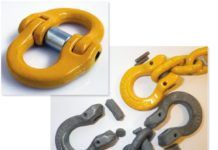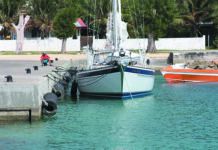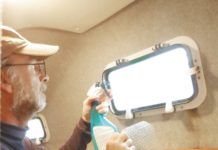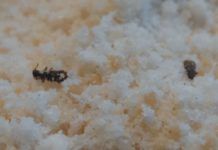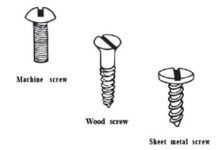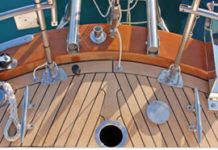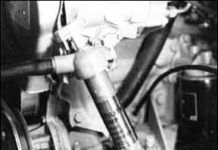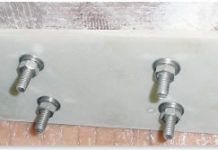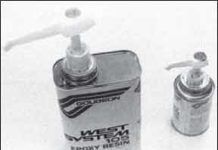Proper Fastenings: Don’t Screw Up
The ultimate in trivial significance is probably Richard III's lament about losing a battle for lack of a nail. By contrast, use a nail in a fiberglass boat and it's likely the boat will be lost. Nails as well as wood screws have little application on a modern boat. The reason is simple: almost any fastener will do a better job than either. In this day and age the most practical fastener material is stainless…
Replacing Teak Decks, the DIY-er’s Way
Practical Sailor contributor and world cruiser Joe Minick details the steps he and his wife took to replace the wornout teak deck aboard their Mason 43, Southern Cross. Minick breaks down the major tasks of the three-month project and explains how they saved a lot of money by doing some of the work themselves. The article looks at the pros and cons of a do-it-yourself teak deck refit; planning and budgeting; step-by-step removal of hardware and the old deck; and the detailed installation process of the new deck.
Winterizing the Engine: Maintenance that Is Truly Preventive
Winterizing an inboard engine installation means a lot more than filling the cooling system with antifreeze and stuffing a rag in the exhaust outlet. It means taking care of the exhaust system, the fuel system, the engine controls, and other components of the drive train, such as the shaft and prop. If you want to do these things yourself — none of them is difficult, only time consuming — plan on a long day of work, or perhaps a leisurely weekend. It's work that will pay off, however, both in improved understanding of your boat's propulsion system, and in money saved. At $25 per hour, the simple projects described here will save you about $200. Few special tools are required, and the only skill necessary is a modicum of common sense.
Where Credit is Due: June 2011
Letters to Practical Sailor, June 2011. This month's letters cover subjects such as: Precision Boat Works, Groco, and More!
Chandlery: June 2011
Although the ease and convenience of electronic chartplotters has ensured their place aboard most every vessel these days, the punch-and-go navigation that makes them so popular has also spawned a generation of slack-jawed zombies when it comes to even the most rudimentary of navigational skills. Prudent mariners continue to carry paper charts, both as backup to chartplotters (and their “one diode away from disaster” nature) and to have the big picture view that a plotter just can’t match.
PS Advisor: Rotten to the Core
Do you have any suggestions on a book or manual that explains how to replace a cored deck where most of it is soaking wet? I replaced a 1.5-square-foot area and was surprised to see that it was so wet and rotten that I could grab the wood core and squeeze it like a sponge.
Laid Teak Decks: Hallmark of Quality
There was a time when laid decks — teak, yellow pine, or fir — were the hallmark of a true yacht. The bare wood gave secure footing, easy maintenance, and reasonable protection from leaks. Since the advent of fiberglass, those same laid decks, almost universally of teak, have continued to represent that hallmark. However, they have become at least as much a cosmetic feature as a functional one. Teak decks, cockpit seats, cockpit sole, hatchtops, and cabin sole all lend themselves to being planked (or sheathed) in a traditional manner Almost no project can do more to "dress up" a boat than some laid decking, and it is a job the average boatowner can do himself. This article describes a simple method for laying decking, one we have used ourselves.
Design For: A Mug Rack
The modest mug, basic in shape and function, finds its way aboard all but the most elegant or the most rudimentary of vessels, because it is so useful. Equally at ease with soup or stew, coffee, tea, or chocolate, bread sticks, spoons, or even flowers, it serves faithfully in rough water and smooth. While almost universally carried aboard boats, the stowage of mugs varies as much as their uses. On some boats they rattle about in the galley sink, while in others they may be neatly nested in a drawer, hung from hooks, or (best of all) resting in proper racks.
Design For: Accessible Radio Rack
Radios occupy an important place in the contemporary sailing scene, supplying weather reports, time ticks, entertainment, and news. High quality radios are also expensive. In other words, they're valuable pieces of equipment and deserve to be protected. One way of protecting a radio is to store it securely chocked in a locker. Unfortunately that means it must be taken out to be used — always a bother and limiting accessibility — and when in use it's vulnerable, since it is not secured as when stowed
Sparkling Brightwork: Careful Attention to the Details
It takes practice to produce a perfect, mirror finish on varnished wood, but it is not so much a difficult task as an exacting one, where attention to detail and no short cuts are the secrets to success. Whether you are finishing new wood, refinishing old wood, or maintaining a finish in good condition, the basics are the same. Tools and materials required are sandpaper, vacuum cleaner or dusting brush, tack rag, brushes, and of course varnish and thinner If you are working from bare wood you may require stain or filler or a combination filler-stain. In cases where old wood has become discolored you will probably want to use a bleaching agent.











